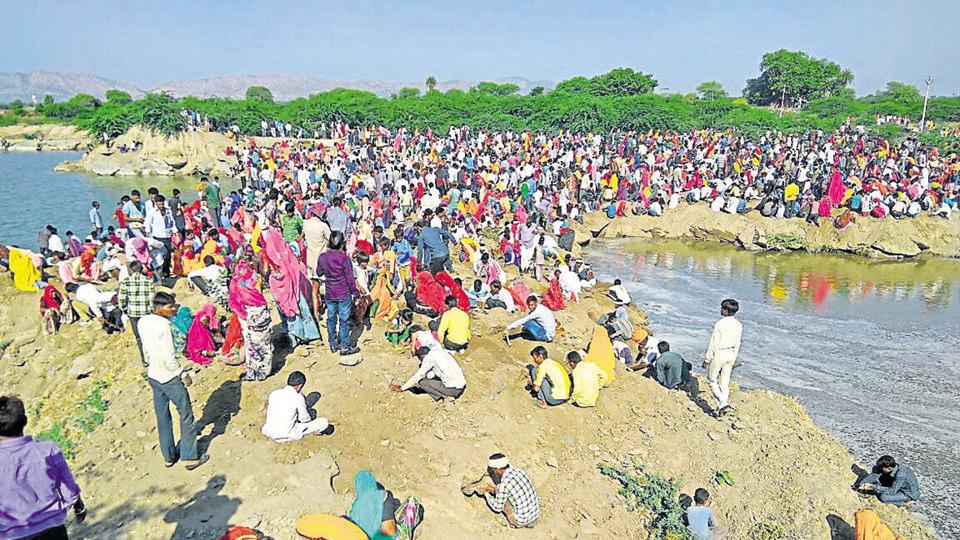Miss Alone
Prime VIP

An abandoned stone quarry in Rajasthan’s Tonk district is keeping the police on their toes. Thousands of villagers from far and wide had descended on the site partly filled with rain water after some locals reported finding some 4th and 5th century gold coins, prompting the police to clamp prohibitory orders and mount a round-the-clock vigil.
A massive hunt has also been launched to retrieve the coins following the veritable gold rush. Every day for the past week, loudspeakers mounted on police vehicles have been going round Janakipura and adjoining areas blaring out advice for villagers to return the coins.
The locals have all but memorised the messages by now. “Sabhi gram vasiyo ko soochit kiya jata hai… (this is to inform all villagers),” the police have been telling over their crackling loudspeakers, adding that strict action will follow if the villagers do not comply.
The coins, the police say, are precious.
After two of them were recovered from a jeweller on December 7, the police got in touch with the Jaipur branch of the Archaeological Survey of India (ASI), which sent two archaeologists to determine the value of the coins.
Their finding has been startling. “Two types of coins belonging to the times of Samudragupta (335-380AD) and Kumaragupta I (414-485 AD) have been found at Janakipura site. I have given my report to Rajasthan’s superintending archaeologist Anil Tiwari,” said Manoj Kumar Dwivedi, one of the two archaeologists.
Samudragupta was the fourth ruler of the Gupta empire and the son of Chandragupta whose kingdom extended from Nepal and Punjab in the north to Kanchipuram in the south. Kumaragupta was the son of Chandragupta II and ruled the empire for long.
The ASI team suspects that someone could have possibly buried the treasure near the quarry. The last time a similar treasure pertaining to the Gupta period had been found was in 1946 when 1,821 coins were recovered from a site in Bayana town.
That the coins are invaluable has sent the police into a tizzy. Prem Singh Nathawat, the station house officer of Diggi police station, believes the villagers have taken away nearly 2,000 coins from the quarry.
“Trust me, I will recover each and every one of them. I am due for retirement after a year, but I want my boys to be rewarded and given promotions,” he added.
Preeti Jain, the district superintendent of police, said the villagers need to return the coins as they were government property. “We will book cases against those who don’t return them,” she said.
Five personnel from the Rajasthan Armed Constabulary are now standing guard at the quarry to discourage villagers from further scouring for coins, as police teams raid surrounding villages. In the past week, they have recovered nine coins.
But some locals insist the police action has come late, much after the horse has bolted. They say the gold rush began sometime in October and continued for two months. “Thousands of people converged and local traders even set up tea and food stalls to make a quick buck. Such frenetic activity could not have gone unnoticed, but for the complicity of the police,” alleged a villager.
However, Sube Singh Yadav, Tonk’s district collector, insisted the gold rush was brought to his notice only recently and said local officials had been instructed to maintain law and order.
With the administration on alert, locals from 10 nearby villages have decided to lie low. Though littered with discarded food and footwear left by the crowd that melted away, the quarry is quiet for now. But the villagers say the gold rush is not over. It has just been interrupted, many of them said.
